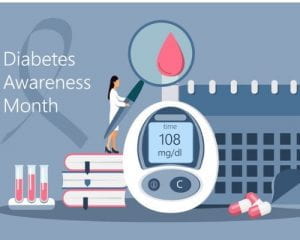The Health Care Flexible Spending Account (FSA) allows you to set aside money from your paycheck on a pre-tax basis to pay for eligible out-of-pocket health care expenses. (Eligibility is determined by the IRS).
Funds may be applied towards medical, dental, vision, hearing and prescription drug expenses – for you and your spouse and eligible tax dependents. GW’s FSAs are administered through PayFlex.
Remember, Internal Revenue Service (IRS) rules dictate that FSA plans are “use or lose” plans, meaning that if you have a Health Care FSA for 2019 and don’t spend your funds by the end of the grace period on March 15, 2020, you’ll lose them. Check out these creative ways to use up those Health Care FSA dollars:
- Stock up on the essentials
Certain standard, over-the-counter medications* and supplies are eligible for FSA spending. This includes First Aid Kits and supplies – including bandages, wraps, adhesives, cold or hot packs, gauze, joint supporters, splints, tape and thermometers – as well as prescriptions for headache medicine, pain relievers, antacids, heartburn medicine and more. Over-the-counter sunscreen products and lip balm are also FSA-eligible. Remember, in order to be reimbursed through your FSA, sunscreen must be at least SPF 15 or higher and protect against two types of ultraviolet radiation: ultraviolet A and ultraviolet B.
*Note per IRS guidelines: Over-the-counter medicine drugs and medicine – such as Advil, Aleve, Anacin, aspirin, Doan’s, Excedrin, HeadOn, IMAK, Motrin and Tylenol – require a prescription from your healthcare professional in order to be reimbursed through the FSA.
- Buy some new specs or shades
Once you get your prescription, you can use your Health Care FSA funds to buy new prescription eyeglasses, sunglasses, goggles and safety glasses. Other eligible expenses include the tinting of prescription eyewear, eye exams, eye patches, cataract surgery, Lasik surgery, Corneal rings and spec repair.
If you prefer contact lenses, those are also covered – this includes contact lens solution, supplies, exams (including fittings) and shipping and handling fees. Cosmetic contact lenses, such as to change eye color without vision correction, are not eligible.
You can also buy reading glasses with your FSA dollars – no prescription required!
- Say bye to blemishes
Get clear skin! Acne treatments are FSA-eligible, as long as you have a prescription from your healthcare professional. Examples of eligible products include, but are not limited to, Acne Free, Acnomel, Bye Bye Blemish, Clean & Clear, Clearasil, Murad Acne Complex Kit, Neutrogena Acne Treatment, OXY, Pro-active Solution, Stri-Dex and SAPZYT Acne Treatment.
- Try acupuncture
Acupuncture can be used to relieve discomfort associated with numerous conditions, including back and neck pain, menstrual cramps, headaches and osteoarthritis. Use your Health Care FSA dollars to cover the cost of acupuncture. You can even buy an acupressure mat with your funds, as long as a healthcare professional has provided evidence of its medical necessity.
- Prep for childbirth
Expecting a baby? Childbirth classes are partially eligible for reimbursement with an FSA. Only the portion of the class that relates to the process of childbirth is eligible. Examples include breathing and relaxation techniques, stages and phase of labor, labor and delivery procedures and birthing positions. Class time not related to childbirth would not be eligible (e.g., breastfeeding, bottle feeding and newborn care). If you have questions about how these classes are reimbursed, contact us at benefits@gwu.edu.
- Get some ZZZs
For a better night’s sleep, with a prescription from your doctor, you can use your Health Care FSA funds to cover the expense of sleep aids. Eligible over-the-counter products include, but are not limited to, Breathe Clear, Breathe Right, nose cones and Snorezz. Nasal strips to alleviate snoring or reduce nasal congestion and earplugs are also qualified expenses.
- Guide animals
The cost of a guide dog or other animal used by a physically, visually or hearing impaired person, or to assist a person with another disability, is an eligible Health Care FSA expense. Amounts paid for the care of a specially trained animal are also covered.
Tip: The costs of handicap license plates/placards and wheelchairs, scooters, and walkers (including the cost of maintenance) are eligible Health Care FSA expenses. You can also use your funds to cover the cost of a specially designed car to hold a wheelchair (to the extent that the cost of the special car exceeds the cost of a regular car).
View the full list of eligible, potentially eligible and ineligible health care expenses, and learn more about GW’s Flexible Spending Accounts, including eligibility information and how to submit a claim to PayFlex.






















